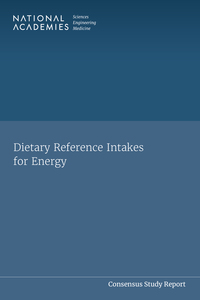DRIs and RDAs, Simplified
By Reed Mangels, PhD, RD
Have you ever seen phrases like “The RDA for calcium for adult women is 1,000 milligrams per day” or “Older adults have significantly increased protein needs as well—up to 50% higher than the DRI”? You may know that RDA stands for Recommended Dietary Allowance but what does that mean? And what is the DRI?
Over the next weeks, we’ll talk about some nutrition terms that often pop up in articles and books. A general understanding of these terms is helpful when thinking about nutrition policy. And, as we’ll see in upcoming posts, nutrition policy influences everything from what is served in school lunch programs and military cafeterias to which foods are provided in the WIC program, to what labels on food packages can say, to evaluating the adequacy of a vegan diet.
Let’s start by looking at DRIs. DRIs stands for Dietary Reference Intakes. DRI is a general term for a set of values that have been developed based on scientific research that are used to determine the amount of each nutrient that is needed by people of different ages and sexes. For example, for the essential mineral zinc, there are different recommendations for zinc needs for males and females in seven different age groups as well as for pregnancy and lactation.
There are DRIs for nutrients including essential vitamins and minerals, protein, fats, carbohydrates, and fiber. For each of the nutrients, different kinds of DRIs are developed. The types of DRIs that you’re probably most familiar with are Recommended Dietary Allowances (RDAs) and Tolerable Upper Intake Levels (ULs).
We won’t talk a lot about ULs. These are the maximum daily amount of a nutrient which is not likely to cause adverse health effects. For example, the UL for preformed vitamin A (the kind of vitamin A found in meat, fish, dairy products, eggs, and supplements) for adults is 3,000 micrograms a day. This means that unless you are taking vitamin A for medical reasons under the care of a doctor, your total daily intake of preformed vitamin A from food, beverages, and supplements should not exceed this UL. Getting too much preformed vitamin A is usually due to vitamin A coming from supplements.
An RDA is the average daily level of intake of a nutrient that meets the needs for that nutrient of nearly all healthy people. For example, the RDA for zinc for adult women is 8 milligrams a day. If you are a healthy adult woman and your food or your food and supplements, on average, provides 8 milligrams of zinc a day, it’s likely that you are getting enough zinc.
You may find tables like this one that give the RDA for different nutrients. An explanation of the science used to develop each RDA for each nutrient has been published by the National Academies Press so if you want to dive into the details, you can access the published volumes of DRIs on their website. Be warned, most are hundreds of pages long.
The DRIs (one component of which is the RDAs) are determined by the National Academy of Medicine, an American nonprofit, non-governmental organization. According to its website, “we [the National Academy of Medicine] harness the talents and expertise of accomplished, thoughtful volunteers and undertake meticulous processes to avoid and balance bias. Our foundational goal is to be the most reliable source for credible scientific and policy advice on matters concerning human health.”
To read more about DRIs and RDAs see:
Dietary Reference Intakes Calculator for Health Professionals

